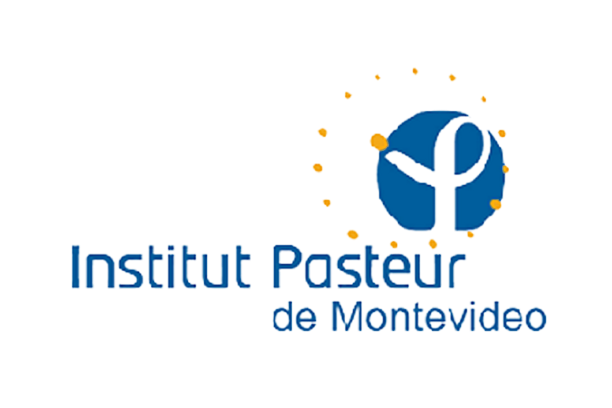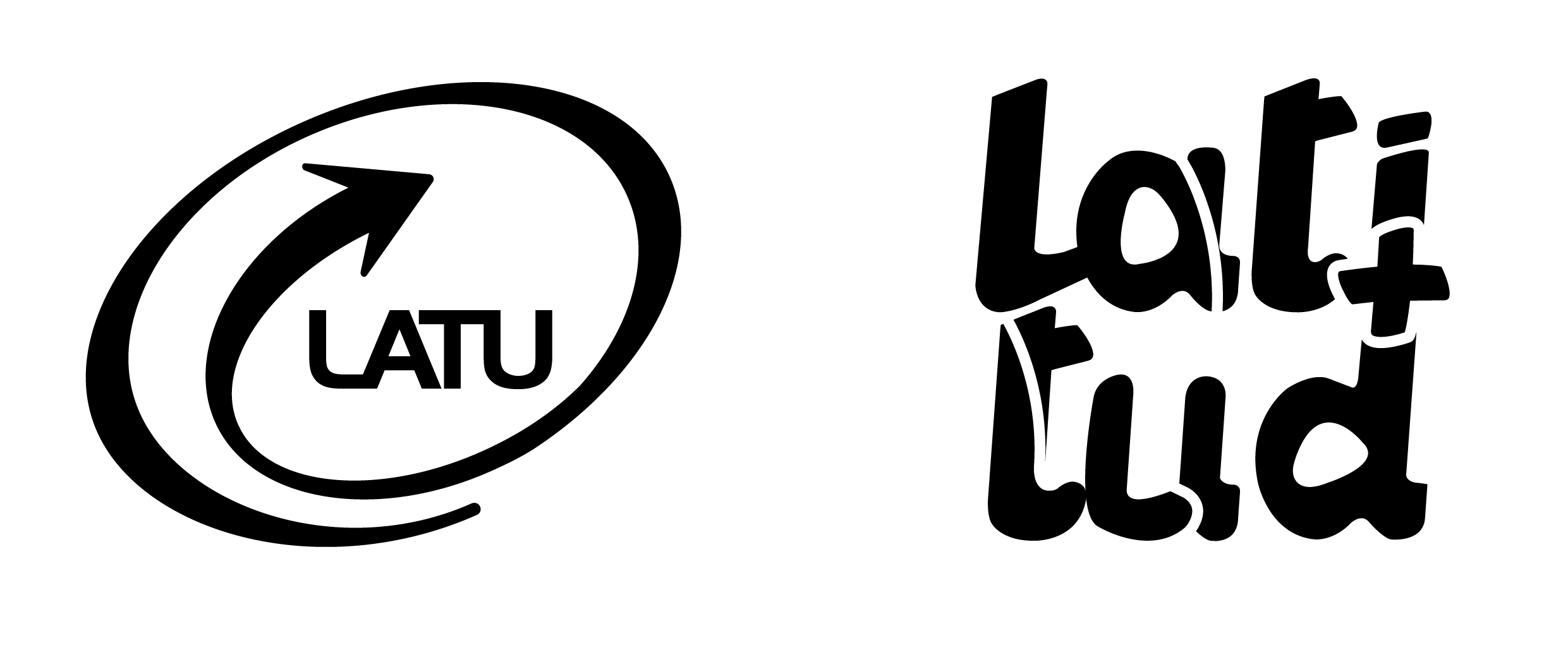Controls of forage selective defoliation by sheep in arid rangelands
Editor(es): Parmenter, R.R.
Resumen:
Selective grazing by domestic livestock is a major control of plant community structure anddynamics in drylands. However, grazing impact predictions supporting management decisions are fre-quently based on average biomass consumption, neglecting selectivity. We evaluated the relative impor-tance of grazing pressure, total and each species density, and plant dead biomass proportion as drivers ofselective defoliation by sheep in three dominant native grass species in Patagonian steppes. Species werePoa ligularis,Festuca pallescens,andPappostipa speciosa, whicha prioripresent different preference degree bysheep. The relevance of these drivers for differently preferred species has not been simultaneously studied.We recorded the defoliation frequency and degree of the three species (dependent variables) throughout112field surveys. Besides, we recorded grazing management and vegetation structure descriptors (inde-pendent variables).Poa ligulariswas highly defoliated (90% of plants), and grazing pressure was the lead-ing driver (asymptotic exponential relationship). ForF. pallescens, almost 70% of plants were defoliated,and defoliation non-linearly increased as grazing pressure rose and linearly decreased as both its dead bio-mass proportion andP. ligularisdensity increased. ForP. speciosa, defoliation was low (20% of plants) andlinearly decreased as both its dead biomass proportion and the density of the other two species increased.Grazing pressure played a negligible role in this species. These patterns confirmed thatP. ligularis,F. palles-cens,andP. speciosa,respectively, present high, intermediate, and low preference degree by sheep. In con-clusion, ourfindings suggest that (1) selective defoliation can be satisfactorily predicted as function ofgrazing pressure, species densities, and plant dead biomass proportion; (2) grazing pressure becomes amore relevant driver as species preference rises and its effect on defoliation is markedly non-linear; (3) thedead biomass proportion and the abundance of highly preferred species are the leading factors determin-ing less preferred species defoliation; and (4) grazing pressure management by itself is not enough toreduce the high defoliation of preferred species and increase the defoliation of non-preferred species. Thisknowledge is critical for developing effective management practices to control forage species defoliation inrangelands worldwide where species with different preference by herbivores coexist.
| 2020 | |
|
Domestic livestoc Drylands Forage species Grazing pressure Patagonian steppes Rangeland management Selectivity Species preference |
|
| Inglés | |
| Universidad de la República | |
| COLIBRI | |
| https://hdl.handle.net/20.500.12008/30810 | |
| Acceso abierto | |
| Licencia Creative Commons Atribución (CC - By 4.0) |
| _version_ | 1807522788097916928 |
|---|---|
| author | Oñativa, G.R. |
| author2 | Golluscio, R.A. Texeira, M. Paruelo, José María |
| author2_role | author author author |
| author_facet | Oñativa, G.R. Golluscio, R.A. Texeira, M. Paruelo, José María |
| author_role | author |
| bitstream.checksum.fl_str_mv | 6429389a7df7277b72b7924fdc7d47a9 a0ebbeafb9d2ec7cbb19d7137ebc392c d606c60c5d78967c4ed7a729e5bb402f 9fdbed07f52437945402c4e70fa4773e c8e0dc2326799250480ed36930a1cc28 |
| bitstream.checksumAlgorithm.fl_str_mv | MD5 MD5 MD5 MD5 MD5 |
| bitstream.url.fl_str_mv | http://localhost:8080/xmlui/bitstream/20.500.12008/30810/5/license.txt http://localhost:8080/xmlui/bitstream/20.500.12008/30810/2/license_url http://localhost:8080/xmlui/bitstream/20.500.12008/30810/3/license_text http://localhost:8080/xmlui/bitstream/20.500.12008/30810/4/license_rdf http://localhost:8080/xmlui/bitstream/20.500.12008/30810/1/10.1002ecs2.3285.pdf |
| collection | COLIBRI |
| dc.contributor.filiacion.none.fl_str_mv | Oñativa G.R. Golluscio R.A. Texeira M. Paruelo Suárez José María, Universidad de la República (Uruguay). Facultad de Ciencias. Instituto de Ecología y Ciencias Ambientales. INIA |
| dc.creator.editor.none.fl_str_mv | Parmenter, R.R. |
| dc.creator.none.fl_str_mv | Oñativa, G.R. Golluscio, R.A. Texeira, M. Paruelo, José María |
| dc.date.accessioned.none.fl_str_mv | 2022-02-09T13:13:25Z |
| dc.date.available.none.fl_str_mv | 2022-02-09T13:13:25Z |
| dc.date.issued.none.fl_str_mv | 2020 |
| dc.description.abstract.none.fl_txt_mv | Selective grazing by domestic livestock is a major control of plant community structure anddynamics in drylands. However, grazing impact predictions supporting management decisions are fre-quently based on average biomass consumption, neglecting selectivity. We evaluated the relative impor-tance of grazing pressure, total and each species density, and plant dead biomass proportion as drivers ofselective defoliation by sheep in three dominant native grass species in Patagonian steppes. Species werePoa ligularis,Festuca pallescens,andPappostipa speciosa, whicha prioripresent different preference degree bysheep. The relevance of these drivers for differently preferred species has not been simultaneously studied.We recorded the defoliation frequency and degree of the three species (dependent variables) throughout112field surveys. Besides, we recorded grazing management and vegetation structure descriptors (inde-pendent variables).Poa ligulariswas highly defoliated (90% of plants), and grazing pressure was the lead-ing driver (asymptotic exponential relationship). ForF. pallescens, almost 70% of plants were defoliated,and defoliation non-linearly increased as grazing pressure rose and linearly decreased as both its dead bio-mass proportion andP. ligularisdensity increased. ForP. speciosa, defoliation was low (20% of plants) andlinearly decreased as both its dead biomass proportion and the density of the other two species increased.Grazing pressure played a negligible role in this species. These patterns confirmed thatP. ligularis,F. palles-cens,andP. speciosa,respectively, present high, intermediate, and low preference degree by sheep. In con-clusion, ourfindings suggest that (1) selective defoliation can be satisfactorily predicted as function ofgrazing pressure, species densities, and plant dead biomass proportion; (2) grazing pressure becomes amore relevant driver as species preference rises and its effect on defoliation is markedly non-linear; (3) thedead biomass proportion and the abundance of highly preferred species are the leading factors determin-ing less preferred species defoliation; and (4) grazing pressure management by itself is not enough toreduce the high defoliation of preferred species and increase the defoliation of non-preferred species. Thisknowledge is critical for developing effective management practices to control forage species defoliation inrangelands worldwide where species with different preference by herbivores coexist. |
| dc.format.extent.es.fl_str_mv | 14 h. |
| dc.format.mimetype.es.fl_str_mv | application/pdf |
| dc.identifier.citation.es.fl_str_mv | Oñativa, G, Golluscio, R, Texeira, M, [y otros] "Controls of forage selective defoliation by sheep in arid rangelands". Ecosphere. [en línea] 2020, 11(11): e03285. 14 h. DOI: 10.1002/ecs2.3285 |
| dc.identifier.doi.none.fl_str_mv | 10.1002/ecs2.3285 |
| dc.identifier.issn.none.fl_str_mv | 2150-8925 |
| dc.identifier.uri.none.fl_str_mv | https://hdl.handle.net/20.500.12008/30810 |
| dc.language.iso.none.fl_str_mv | en eng |
| dc.publisher.es.fl_str_mv | Ecological Society of America |
| dc.relation.ispartof.es.fl_str_mv | Ecosphere, 2020, 11(11): e03285 |
| dc.rights.license.none.fl_str_mv | Licencia Creative Commons Atribución (CC - By 4.0) |
| dc.rights.none.fl_str_mv | info:eu-repo/semantics/openAccess |
| dc.source.none.fl_str_mv | reponame:COLIBRI instname:Universidad de la República instacron:Universidad de la República |
| dc.subject.es.fl_str_mv | Domestic livestoc Drylands Forage species Grazing pressure Patagonian steppes Rangeland management Selectivity Species preference |
| dc.title.none.fl_str_mv | Controls of forage selective defoliation by sheep in arid rangelands |
| dc.type.es.fl_str_mv | Artículo |
| dc.type.none.fl_str_mv | info:eu-repo/semantics/article |
| dc.type.version.none.fl_str_mv | info:eu-repo/semantics/publishedVersion |
| description | Selective grazing by domestic livestock is a major control of plant community structure anddynamics in drylands. However, grazing impact predictions supporting management decisions are fre-quently based on average biomass consumption, neglecting selectivity. We evaluated the relative impor-tance of grazing pressure, total and each species density, and plant dead biomass proportion as drivers ofselective defoliation by sheep in three dominant native grass species in Patagonian steppes. Species werePoa ligularis,Festuca pallescens,andPappostipa speciosa, whicha prioripresent different preference degree bysheep. The relevance of these drivers for differently preferred species has not been simultaneously studied.We recorded the defoliation frequency and degree of the three species (dependent variables) throughout112field surveys. Besides, we recorded grazing management and vegetation structure descriptors (inde-pendent variables).Poa ligulariswas highly defoliated (90% of plants), and grazing pressure was the lead-ing driver (asymptotic exponential relationship). ForF. pallescens, almost 70% of plants were defoliated,and defoliation non-linearly increased as grazing pressure rose and linearly decreased as both its dead bio-mass proportion andP. ligularisdensity increased. ForP. speciosa, defoliation was low (20% of plants) andlinearly decreased as both its dead biomass proportion and the density of the other two species increased.Grazing pressure played a negligible role in this species. These patterns confirmed thatP. ligularis,F. palles-cens,andP. speciosa,respectively, present high, intermediate, and low preference degree by sheep. In con-clusion, ourfindings suggest that (1) selective defoliation can be satisfactorily predicted as function ofgrazing pressure, species densities, and plant dead biomass proportion; (2) grazing pressure becomes amore relevant driver as species preference rises and its effect on defoliation is markedly non-linear; (3) thedead biomass proportion and the abundance of highly preferred species are the leading factors determin-ing less preferred species defoliation; and (4) grazing pressure management by itself is not enough toreduce the high defoliation of preferred species and increase the defoliation of non-preferred species. Thisknowledge is critical for developing effective management practices to control forage species defoliation inrangelands worldwide where species with different preference by herbivores coexist. |
| eu_rights_str_mv | openAccess |
| format | article |
| id | COLIBRI_58f58ba644a2237d0bc164881cb23611 |
| identifier_str_mv | Oñativa, G, Golluscio, R, Texeira, M, [y otros] "Controls of forage selective defoliation by sheep in arid rangelands". Ecosphere. [en línea] 2020, 11(11): e03285. 14 h. DOI: 10.1002/ecs2.3285 2150-8925 10.1002/ecs2.3285 |
| instacron_str | Universidad de la República |
| institution | Universidad de la República |
| instname_str | Universidad de la República |
| language | eng |
| language_invalid_str_mv | en |
| network_acronym_str | COLIBRI |
| network_name_str | COLIBRI |
| oai_identifier_str | oai:colibri.udelar.edu.uy:20.500.12008/30810 |
| publishDate | 2020 |
| reponame_str | COLIBRI |
| repository.mail.fl_str_mv | mabel.seroubian@seciu.edu.uy |
| repository.name.fl_str_mv | COLIBRI - Universidad de la República |
| repository_id_str | 4771 |
| rights_invalid_str_mv | Licencia Creative Commons Atribución (CC - By 4.0) |
| spelling | Oñativa G.R.Golluscio R.A.Texeira M.Paruelo Suárez José María, Universidad de la República (Uruguay). Facultad de Ciencias. Instituto de Ecología y Ciencias Ambientales. INIA2022-02-09T13:13:25Z2022-02-09T13:13:25Z2020Oñativa, G, Golluscio, R, Texeira, M, [y otros] "Controls of forage selective defoliation by sheep in arid rangelands". Ecosphere. [en línea] 2020, 11(11): e03285. 14 h. DOI: 10.1002/ecs2.32852150-8925https://hdl.handle.net/20.500.12008/3081010.1002/ecs2.3285Selective grazing by domestic livestock is a major control of plant community structure anddynamics in drylands. However, grazing impact predictions supporting management decisions are fre-quently based on average biomass consumption, neglecting selectivity. We evaluated the relative impor-tance of grazing pressure, total and each species density, and plant dead biomass proportion as drivers ofselective defoliation by sheep in three dominant native grass species in Patagonian steppes. Species werePoa ligularis,Festuca pallescens,andPappostipa speciosa, whicha prioripresent different preference degree bysheep. The relevance of these drivers for differently preferred species has not been simultaneously studied.We recorded the defoliation frequency and degree of the three species (dependent variables) throughout112field surveys. Besides, we recorded grazing management and vegetation structure descriptors (inde-pendent variables).Poa ligulariswas highly defoliated (90% of plants), and grazing pressure was the lead-ing driver (asymptotic exponential relationship). ForF. pallescens, almost 70% of plants were defoliated,and defoliation non-linearly increased as grazing pressure rose and linearly decreased as both its dead bio-mass proportion andP. ligularisdensity increased. ForP. speciosa, defoliation was low (20% of plants) andlinearly decreased as both its dead biomass proportion and the density of the other two species increased.Grazing pressure played a negligible role in this species. These patterns confirmed thatP. ligularis,F. palles-cens,andP. speciosa,respectively, present high, intermediate, and low preference degree by sheep. In con-clusion, ourfindings suggest that (1) selective defoliation can be satisfactorily predicted as function ofgrazing pressure, species densities, and plant dead biomass proportion; (2) grazing pressure becomes amore relevant driver as species preference rises and its effect on defoliation is markedly non-linear; (3) thedead biomass proportion and the abundance of highly preferred species are the leading factors determin-ing less preferred species defoliation; and (4) grazing pressure management by itself is not enough toreduce the high defoliation of preferred species and increase the defoliation of non-preferred species. Thisknowledge is critical for developing effective management practices to control forage species defoliation inrangelands worldwide where species with different preference by herbivores coexist.Submitted by Verdun Juan Pablo (jverdun@fcien.edu.uy) on 2022-02-08T18:27:46Z No. of bitstreams: 2 license_rdf: 19875 bytes, checksum: 9fdbed07f52437945402c4e70fa4773e (MD5) 10.1002ecs2.3285.pdf: 1826461 bytes, checksum: c8e0dc2326799250480ed36930a1cc28 (MD5)Approved for entry into archive by Faget Cecilia (lfaget@fcien.edu.uy) on 2022-02-09T11:26:25Z (GMT) No. of bitstreams: 2 license_rdf: 19875 bytes, checksum: 9fdbed07f52437945402c4e70fa4773e (MD5) 10.1002ecs2.3285.pdf: 1826461 bytes, checksum: c8e0dc2326799250480ed36930a1cc28 (MD5)Made available in DSpace by Luna Fabiana (fabiana.luna@seciu.edu.uy) on 2022-02-09T13:13:25Z (GMT). No. of bitstreams: 2 license_rdf: 19875 bytes, checksum: 9fdbed07f52437945402c4e70fa4773e (MD5) 10.1002ecs2.3285.pdf: 1826461 bytes, checksum: c8e0dc2326799250480ed36930a1cc28 (MD5) Previous issue date: 202014 h.application/pdfenengEcological Society of AmericaEcosphere, 2020, 11(11): e03285Las obras depositadas en el Repositorio se rigen por la Ordenanza de los Derechos de la Propiedad Intelectual de la Universidad de la República.(Res. Nº 91 de C.D.C. de 8/III/1994 – D.O. 7/IV/1994) y por la Ordenanza del Repositorio Abierto de la Universidad de la República (Res. Nº 16 de C.D.C. de 07/10/2014)info:eu-repo/semantics/openAccessLicencia Creative Commons Atribución (CC - By 4.0)Domestic livestocDrylandsForage speciesGrazing pressurePatagonian steppesRangeland managementSelectivitySpecies preferenceControls of forage selective defoliation by sheep in arid rangelandsArtículoinfo:eu-repo/semantics/articleinfo:eu-repo/semantics/publishedVersionreponame:COLIBRIinstname:Universidad de la Repúblicainstacron:Universidad de la RepúblicaOñativa, G.R.Golluscio, R.A.Texeira, M.Paruelo, José MaríaParmenter, R.R.LICENSElicense.txtlicense.txttext/plain; charset=utf-84267http://localhost:8080/xmlui/bitstream/20.500.12008/30810/5/license.txt6429389a7df7277b72b7924fdc7d47a9MD55CC-LICENSElicense_urllicense_urltext/plain; charset=utf-844http://localhost:8080/xmlui/bitstream/20.500.12008/30810/2/license_urla0ebbeafb9d2ec7cbb19d7137ebc392cMD52license_textlicense_texttext/html; charset=utf-838395http://localhost:8080/xmlui/bitstream/20.500.12008/30810/3/license_textd606c60c5d78967c4ed7a729e5bb402fMD53license_rdflicense_rdfapplication/rdf+xml; charset=utf-819875http://localhost:8080/xmlui/bitstream/20.500.12008/30810/4/license_rdf9fdbed07f52437945402c4e70fa4773eMD54ORIGINAL10.1002ecs2.3285.pdf10.1002ecs2.3285.pdfapplication/pdf1826461http://localhost:8080/xmlui/bitstream/20.500.12008/30810/1/10.1002ecs2.3285.pdfc8e0dc2326799250480ed36930a1cc28MD5120.500.12008/308102022-06-10 08:58:11.14oai:colibri.udelar.edu.uy:20.500.12008/30810VGVybWlub3MgeSBjb25kaWNpb25lcyByZWxhdGl2YXMgYWwgZGVwb3NpdG8gZGUgb2JyYXMKCgpMYXMgb2JyYXMgZGVwb3NpdGFkYXMgZW4gZWwgUmVwb3NpdG9yaW8gc2UgcmlnZW4gcG9yIGxhIE9yZGVuYW56YSBkZSBsb3MgRGVyZWNob3MgZGUgbGEgUHJvcGllZGFkIEludGVsZWN0dWFsICBkZSBsYSBVbml2ZXJzaWRhZCBEZSBMYSBSZXDDumJsaWNhLiAoUmVzLiBOwrogOTEgZGUgQy5ELkMuIGRlIDgvSUlJLzE5OTQg4oCTIEQuTy4gNy9JVi8xOTk0KSB5ICBwb3IgbGEgT3JkZW5hbnphIGRlbCBSZXBvc2l0b3JpbyBBYmllcnRvIGRlIGxhIFVuaXZlcnNpZGFkIGRlIGxhIFJlcMO6YmxpY2EgKFJlcy4gTsK6IDE2IGRlIEMuRC5DLiBkZSAwNy8xMC8yMDE0KS4gCgpBY2VwdGFuZG8gZWwgYXV0b3IgZXN0b3MgdMOpcm1pbm9zIHkgY29uZGljaW9uZXMgZGUgZGVww7NzaXRvIGVuIENPTElCUkksIGxhIFVuaXZlcnNpZGFkIGRlIFJlcMO6YmxpY2EgcHJvY2VkZXLDoSBhOiAgCgphKSBhcmNoaXZhciBtw6FzIGRlIHVuYSBjb3BpYSBkZSBsYSBvYnJhIGVuIGxvcyBzZXJ2aWRvcmVzIGRlIGxhIFVuaXZlcnNpZGFkIGEgbG9zIGVmZWN0b3MgZGUgZ2FyYW50aXphciBhY2Nlc28sIHNlZ3VyaWRhZCB5IHByZXNlcnZhY2nDs24KYikgY29udmVydGlyIGxhIG9icmEgYSBvdHJvcyBmb3JtYXRvcyBzaSBmdWVyYSBuZWNlc2FyaW8gIHBhcmEgZmFjaWxpdGFyIHN1IHByZXNlcnZhY2nDs24geSBhY2Nlc2liaWxpZGFkIHNpbiBhbHRlcmFyIHN1IGNvbnRlbmlkby4KYykgcmVhbGl6YXIgbGEgY29tdW5pY2FjacOzbiBww7pibGljYSB5IGRpc3BvbmVyIGVsIGFjY2VzbyBsaWJyZSB5IGdyYXR1aXRvIGEgdHJhdsOpcyBkZSBJbnRlcm5ldCBtZWRpYW50ZSBsYSBwdWJsaWNhY2nDs24gZGUgbGEgb2JyYSBiYWpvIGxhIGxpY2VuY2lhIENyZWF0aXZlIENvbW1vbnMgc2VsZWNjaW9uYWRhIHBvciBlbCBwcm9waW8gYXV0b3IuCgoKRW4gY2FzbyBxdWUgZWwgYXV0b3IgaGF5YSBkaWZ1bmRpZG8geSBkYWRvIGEgcHVibGljaWRhZCBhIGxhIG9icmEgZW4gZm9ybWEgcHJldmlhLCAgcG9kcsOhIHNvbGljaXRhciB1biBwZXLDrW9kbyBkZSBlbWJhcmdvIHNvYnJlIGxhIGRpc3BvbmliaWxpZGFkIHDDumJsaWNhIGRlIGxhIG1pc21hLCBlbCBjdWFsIGNvbWVuemFyw6EgYSBwYXJ0aXIgZGUgbGEgYWNlcHRhY2nDs24gZGUgZXN0ZSBkb2N1bWVudG8geSBoYXN0YSBsYSBmZWNoYSBxdWUgaW5kaXF1ZSAuCgpFbCBhdXRvciBhc2VndXJhIHF1ZSBsYSBvYnJhIG5vIGluZnJpZ2UgbmluZ8O6biBkZXJlY2hvIHNvYnJlIHRlcmNlcm9zLCB5YSBzZWEgZGUgcHJvcGllZGFkIGludGVsZWN0dWFsIG8gY3VhbHF1aWVyIG90cm8uCgpFbCBhdXRvciBnYXJhbnRpemEgcXVlIHNpIGVsIGRvY3VtZW50byBjb250aWVuZSBtYXRlcmlhbGVzIGRlIGxvcyBjdWFsZXMgbm8gdGllbmUgbG9zIGRlcmVjaG9zIGRlIGF1dG9yLCAgaGEgb2J0ZW5pZG8gZWwgcGVybWlzbyBkZWwgcHJvcGlldGFyaW8gZGUgbG9zIGRlcmVjaG9zIGRlIGF1dG9yLCB5IHF1ZSBlc2UgbWF0ZXJpYWwgY3V5b3MgZGVyZWNob3Mgc29uIGRlIHRlcmNlcm9zIGVzdMOhIGNsYXJhbWVudGUgaWRlbnRpZmljYWRvIHkgcmVjb25vY2lkbyBlbiBlbCB0ZXh0byBvIGNvbnRlbmlkbyBkZWwgZG9jdW1lbnRvIGRlcG9zaXRhZG8gZW4gZWwgUmVwb3NpdG9yaW8uCgpFbiBvYnJhcyBkZSBhdXRvcsOtYSBtw7psdGlwbGUgL3NlIHByZXN1bWUvIHF1ZSBlbCBhdXRvciBkZXBvc2l0YW50ZSBkZWNsYXJhIHF1ZSBoYSByZWNhYmFkbyBlbCBjb25zZW50aW1pZW50byBkZSB0b2RvcyBsb3MgYXV0b3JlcyBwYXJhIHB1YmxpY2FybGEgZW4gZWwgUmVwb3NpdG9yaW8sIHNpZW5kbyDDqXN0ZSBlbCDDum5pY28gcmVzcG9uc2FibGUgZnJlbnRlIGEgY3VhbHF1aWVyIHRpcG8gZGUgcmVjbGFtYWNpw7NuIGRlIGxvcyBvdHJvcyBjb2F1dG9yZXMuCgpFbCBhdXRvciBzZXLDoSByZXNwb25zYWJsZSBkZWwgY29udGVuaWRvIGRlIGxvcyBkb2N1bWVudG9zIHF1ZSBkZXBvc2l0YS4gTGEgVURFTEFSIG5vIHNlcsOhIHJlc3BvbnNhYmxlIHBvciBsYXMgZXZlbnR1YWxlcyB2aW9sYWNpb25lcyBhbCBkZXJlY2hvIGRlIHByb3BpZWRhZCBpbnRlbGVjdHVhbCBlbiBxdWUgcHVlZGEgaW5jdXJyaXIgZWwgYXV0b3IuCgpBbnRlIGN1YWxxdWllciBkZW51bmNpYSBkZSB2aW9sYWNpw7NuIGRlIGRlcmVjaG9zIGRlIHByb3BpZWRhZCBpbnRlbGVjdHVhbCwgbGEgVURFTEFSICBhZG9wdGFyw6EgdG9kYXMgbGFzIG1lZGlkYXMgbmVjZXNhcmlhcyBwYXJhIGV2aXRhciBsYSBjb250aW51YWNpw7NuIGRlIGRpY2hhIGluZnJhY2Npw7NuLCBsYXMgcXVlIHBvZHLDoW4gaW5jbHVpciBlbCByZXRpcm8gZGVsIGFjY2VzbyBhIGxvcyBjb250ZW5pZG9zIHkvbyBtZXRhZGF0b3MgZGVsIGRvY3VtZW50byByZXNwZWN0aXZvLgoKTGEgb2JyYSBzZSBwb25kcsOhIGEgZGlzcG9zaWNpw7NuIGRlbCBww7pibGljbyBhIHRyYXbDqXMgZGUgbGFzIGxpY2VuY2lhcyBDcmVhdGl2ZSBDb21tb25zLCBlbCBhdXRvciBwb2Ryw6Egc2VsZWNjaW9uYXIgdW5hIGRlIGxhcyA2IGxpY2VuY2lhcyBkaXNwb25pYmxlczoKCgpBdHJpYnVjacOzbiAoQ0MgLSBCeSk6IFBlcm1pdGUgdXNhciBsYSBvYnJhIHkgZ2VuZXJhciBvYnJhcyBkZXJpdmFkYXMsIGluY2x1c28gY29uIGZpbmVzIGNvbWVyY2lhbGVzLCBzaWVtcHJlIHF1ZSBzZSByZWNvbm96Y2EgYWwgYXV0b3IuCgpBdHJpYnVjacOzbiDigJMgQ29tcGFydGlyIElndWFsIChDQyAtIEJ5LVNBKTogUGVybWl0ZSB1c2FyIGxhIG9icmEgeSBnZW5lcmFyIG9icmFzIGRlcml2YWRhcywgaW5jbHVzbyBjb24gZmluZXMgY29tZXJjaWFsZXMsIHBlcm8gbGEgZGlzdHJpYnVjacOzbiBkZSBsYXMgb2JyYXMgZGVyaXZhZGFzIGRlYmUgaGFjZXJzZSBtZWRpYW50ZSB1bmEgbGljZW5jaWEgaWTDqW50aWNhIGEgbGEgZGUgbGEgb2JyYSBvcmlnaW5hbCwgcmVjb25vY2llbmRvIGEgbG9zIGF1dG9yZXMuCgpBdHJpYnVjacOzbiDigJMgTm8gQ29tZXJjaWFsIChDQyAtIEJ5LU5DKTogUGVybWl0ZSB1c2FyIGxhIG9icmEgeSBnZW5lcmFyIG9icmFzIGRlcml2YWRhcywgc2llbXByZSB5IGN1YW5kbyBlc29zIHVzb3Mgbm8gdGVuZ2FuIGZpbmVzIGNvbWVyY2lhbGVzLCByZWNvbm9jaWVuZG8gYWwgYXV0b3IuCgpBdHJpYnVjacOzbiDigJMgU2luIERlcml2YWRhcyAoQ0MgLSBCeS1ORCk6IFBlcm1pdGUgZWwgdXNvIGRlIGxhIG9icmEsIGluY2x1c28gY29uIGZpbmVzIGNvbWVyY2lhbGVzLCBwZXJvIG5vIHNlIHBlcm1pdGUgZ2VuZXJhciBvYnJhcyBkZXJpdmFkYXMsIGRlYmllbmRvIHJlY29ub2NlciBhbCBhdXRvci4KCkF0cmlidWNpw7NuIOKAkyBObyBDb21lcmNpYWwg4oCTIENvbXBhcnRpciBJZ3VhbCAoQ0Mg4oCTIEJ5LU5DLVNBKTogUGVybWl0ZSB1c2FyIGxhIG9icmEgeSBnZW5lcmFyIG9icmFzIGRlcml2YWRhcywgc2llbXByZSB5IGN1YW5kbyBlc29zIHVzb3Mgbm8gdGVuZ2FuIGZpbmVzIGNvbWVyY2lhbGVzIHkgbGEgZGlzdHJpYnVjacOzbiBkZSBsYXMgb2JyYXMgZGVyaXZhZGFzIHNlIGhhZ2EgbWVkaWFudGUgbGljZW5jaWEgaWTDqW50aWNhIGEgbGEgZGUgbGEgb2JyYSBvcmlnaW5hbCwgcmVjb25vY2llbmRvIGEgbG9zIGF1dG9yZXMuCgpBdHJpYnVjacOzbiDigJMgTm8gQ29tZXJjaWFsIOKAkyBTaW4gRGVyaXZhZGFzIChDQyAtIEJ5LU5DLU5EKTogUGVybWl0ZSB1c2FyIGxhIG9icmEsIHBlcm8gbm8gc2UgcGVybWl0ZSBnZW5lcmFyIG9icmFzIGRlcml2YWRhcyB5IG5vIHNlIHBlcm1pdGUgdXNvIGNvbiBmaW5lcyBjb21lcmNpYWxlcywgZGViaWVuZG8gcmVjb25vY2VyIGFsIGF1dG9yLgoKTG9zIHVzb3MgcHJldmlzdG9zIGVuIGxhcyBsaWNlbmNpYXMgaW5jbHV5ZW4gbGEgZW5hamVuYWNpw7NuLCByZXByb2R1Y2Npw7NuLCBjb211bmljYWNpw7NuLCBwdWJsaWNhY2nDs24sIGRpc3RyaWJ1Y2nDs24geSBwdWVzdGEgYSBkaXNwb3NpY2nDs24gZGVsIHDDumJsaWNvLiBMYSBjcmVhY2nDs24gZGUgb2JyYXMgZGVyaXZhZGFzIGluY2x1eWUgbGEgYWRhcHRhY2nDs24sIHRyYWR1Y2Npw7NuIHkgZWwgcmVtaXguCgpDdWFuZG8gc2Ugc2VsZWNjaW9uZSB1bmEgbGljZW5jaWEgcXVlIGhhYmlsaXRlIHVzb3MgY29tZXJjaWFsZXMsIGVsIGRlcMOzc2l0byBkZWJlcsOhIHNlciBhY29tcGHDsWFkbyBkZWwgYXZhbCBkZWwgamVyYXJjYSBtw6F4aW1vIGRlbCBTZXJ2aWNpbyBjb3JyZXNwb25kaWVudGUuCg==Universidadhttps://udelar.edu.uy/https://www.colibri.udelar.edu.uy/oai/requestmabel.seroubian@seciu.edu.uyUruguayopendoar:47712024-07-25T14:28:34.899113COLIBRI - Universidad de la Repúblicafalse |
| spellingShingle | Controls of forage selective defoliation by sheep in arid rangelands Oñativa, G.R. Domestic livestoc Drylands Forage species Grazing pressure Patagonian steppes Rangeland management Selectivity Species preference |
| status_str | publishedVersion |
| title | Controls of forage selective defoliation by sheep in arid rangelands |
| title_full | Controls of forage selective defoliation by sheep in arid rangelands |
| title_fullStr | Controls of forage selective defoliation by sheep in arid rangelands |
| title_full_unstemmed | Controls of forage selective defoliation by sheep in arid rangelands |
| title_short | Controls of forage selective defoliation by sheep in arid rangelands |
| title_sort | Controls of forage selective defoliation by sheep in arid rangelands |
| topic | Domestic livestoc Drylands Forage species Grazing pressure Patagonian steppes Rangeland management Selectivity Species preference |
| url | https://hdl.handle.net/20.500.12008/30810 |












